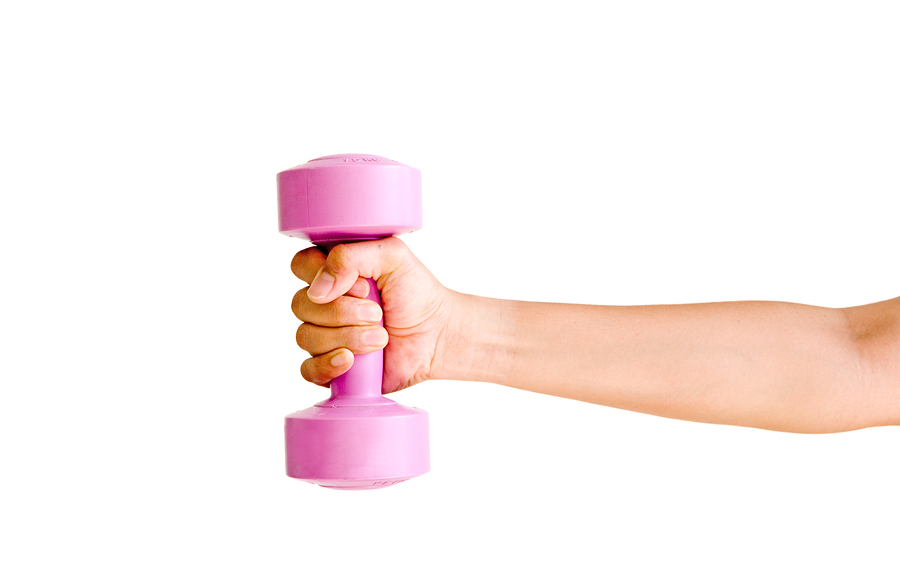The strength of Strength
The largest metabolically (use of energy) active tissue in our bodies is muscle.
The metabolic rate is the rate at which the body burns up calories. Someone that consumes 2500 calories a day, and burns 2500 calories a day will stay at the same weight. Someone consuming 2500 calories daily but burning only 2000 will gain weight at the rate of about 1lb a week. For every extra pound of muscle you put on, your body uses extra calories. The research is conflicting but between 20 – 50 extra calories a day, and some evidence exists that supports a boost in basal (resting) metabolic rate by up to 15%. For a 80kg person that’s equivalent to 4’380 extra calories a year burned if you toned up by adding 1 pound of muscle and maintained your calorie intake, just over a pound of fat; a great return for minimal training.
Apart from enhancing weight loss, strength training also;
(you guessed it!) makes you stronger so you can function better (functional capacity) in daily activity such as climbing stairs, lifting heavy stuff and moving your body around.
Protects joints, which are the main things that suffer from wear and tear and injury in the musculo-skeletal system – but which can either be avoided, mitigated or the pain relieved through ensuring the muscles supporting a joint (and the joint’s fluid lubricating system) are strong and resilient.
Helps prevent posture related pain. Over time and without strength our body’s slump forward as gravity wins or our day to day slouching (desk work etc) predominates. Ever wondered why our arms don’t face backwards?
Allows us to stay very physically active well into older age should we choose to. Exercise, even competitive sport, can all be continued throughout life provided we are strong enough. And in being active we are emotionally and psychologically robust and healthy too.
So, what to do to be strong…without spending money on gym memberships or devoting too much time to improving?
There are thousands of exercise one can do and Silverhairs will over several articles suggest some of them and explain how and why they are worth considering. However to get you started we have chosen what’s called a ‘whole body movement’ …it looks easy…
It requires all of your joints to have good movement range, stability strength and uses virtually every major muscle in your body. So before you begin ensure you are injury free and if in any doubt ask your GP for the OK to exercise. Remember Silverhairs is not responsible for any injury should you choose to try any of the exercises we mention.
The Overhead Squat
Different people will be able to do this movement (exercise) to varying degrees of movement (range of movement) depending on joint wear and tear, strength and mobility. So it is possible to move just a few inches to begin with all the way to a full movement. They key is to maintain the correct Form (technique) at ALL times and only move as far as possible without undue discomfort; but remember some effort should be required!
The basic movement is: (one that only moves into a half squat position, hips above knees)
*1
The advanced full movement is: (one where there is a full range, hips below knees)
The teaching points below apply to both examples:
Important points are to:
Keep the body aligned correctly, with knees over the big and second toe. The knees can come forward of the foot but not ‘fall’ inwards.
Ensure the arms do not fall forward
Maintain a small arch in the lower back throughout
Keep the weight slightly towards the rear of the foot avoiding moving forward onto the toes and off the heels
Breath out when moving upwards
Use a controlled moderate to slow movement (never mover rapidly)
No matter whether you do this exercise at home with little or no weight (load) or use a heavy bar, dumbbells or weights (instead of the towel or stick) to add load this is an efficient whole body exercise that will improve overall strength, mobility and joint stability.
Repetitions of 10-12 is a good way to gain a broad spectrum of strength and endurance; using higher loads and repetitions of around 7 will give maximum strength gains but should never be done unless a reasonable history of 3-4 months of consistent exercise exists. Between 2-5 sets (depending on the time you have) with 2-3 minutes rest between sets; completed every other day, is the ideal way for the Overhead Squat to kick start your strength work or as an adjunct to other exercise you are already doing.
Photo acknowledgments:
1. www.myhousecallmd.com/archives/3153
2. Adapted from www. folsomcitycrossfit.com
Disclaimer
All content on Silversurfers.com is provided for general information only, and should not be treated at all as a substitute for the medical advice of your own doctor or any other health care professional. Silversurfers will not be responsible or liable for any diagnosis made by a user based on the content on www.silversurfers.com and we are also not liable for the content of any external websites or links from or to Silversurfers to any other websites. Please always consult your own doctor if you’re in any way concerned about any aspect of your health.
Pat Fox
Latest posts by Pat Fox (see all)
- Fluid Facts – hydration for health - July 16, 2014
- Oh to sleep ….. - January 29, 2013
- The Heart of the Matter - December 4, 2012
- Exercise is Medicine - October 24, 2012
- The strength of Strength - October 23, 2012























